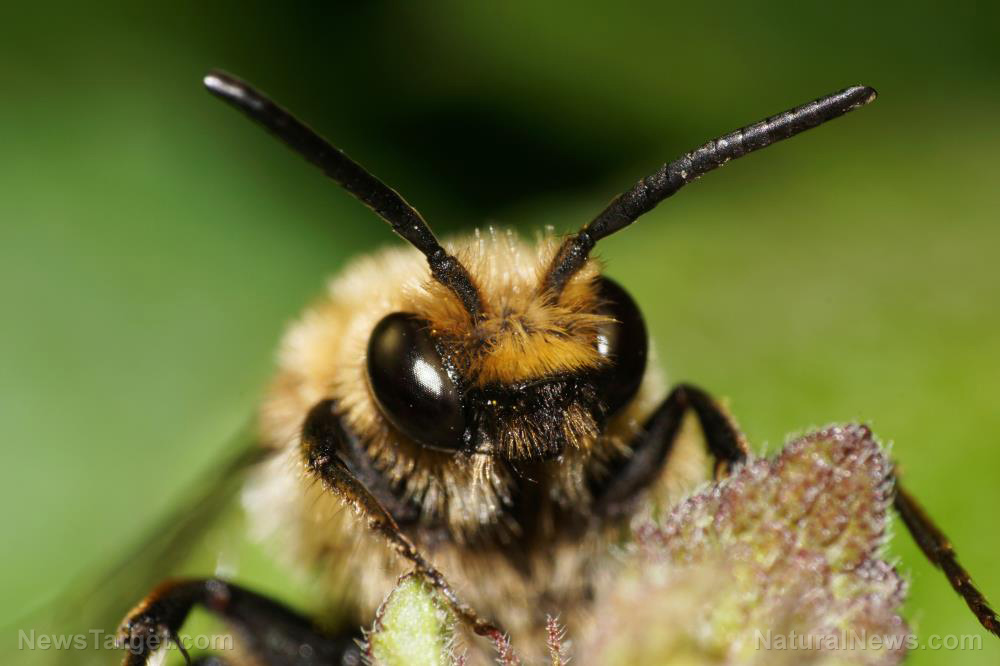This pollution-catching “super plant” is ideal for growing beside busy roads, say scientists
03/04/2021 / By Divina Ramirez

Franchet’s cotoneaster (Cotoneaster franchetii) has been identified by scientists as the ideal hedge for soaking up air pollution on busy roads. Thanks to its hairy leaves, Franchet’s cotoneaster is able to trap potentially harmful particles from polluted air, according to research by the Royal Horticultural Society (RHS).
Scientists collected leaves from a variety of hedges along busy roads in the British town of Reading to measure the amount of particulate matter (PM) they were able to extract from the surrounding air.
The scientists found that Franchet’s cotoneaster, a shrub with clusters of small pink and white flowers that are attractive to bees, are the most effective at soaking up pollution.
In particular, Franchet’s cotoneaster was 20 percent more effective than other shrubs at cleaning the air along roads with heavy traffic. In fact, the scientists found that a one-meter-long section of Franchet’s cotoneaster is more than capable of absorbing hundreds of miles’ worth of car pollution within a week.
The shrub traps PM in the tiny hairs and ridges on its small egg-shaped leaves. Once trapped, the particles are kept there even when the leaves are moving also because of the leaves’ hairs and ridges.
These features help increase the surface area onto which PM is deposited, said Tijana Blanusa, the lead author of the study and the principal horticultural scientist at the RHS.
Moreover, it is these exact features that make it harder for PM to dislodge whenever the leaves would move. It turns out, this is true even for other shrubs, so long as their leaves also have ridges or hair-like features.
Blanusa said Franchet’s cotoneaster would be ideal to plant along busy roads in towns and cities that see more air pollution. In places that aren’t as polluted, Blanusa advises planting a mix of hedge species.
The study, which appeared in the journal Environments, is part of the work by the RHS to address several key environmental problems in the United Kingdom, such as air pollution and flooding, by promoting the cultivation of gardens and green spaces.
The best plant for absorbing roadside air pollution
Studies show that hedges can act as barriers to roadside air pollution. To determine what plant species is most efficient at absorbing air pollution, Blanusa and her colleagues first compared three widely used approaches to quantifying PM accumulation and deposition in plants.
They then used the most effective method of the three to compare how different species of shrubs trapped PM. They found that Franchet’s cotoneaster was the most efficient shrub at trapping PM, primarily because of hair-like structures and ridges on its leaves.
Air pollution is the largest environmental risk to public health in the United Kingdom. According to a recently commissioned survey by the RHS, air pollution affects one in three people (33 percent) in the U.K. (Related: You know air pollution is dangerous, but what about the air INSIDE your home?)
However, only six percent of people plant a garden to help curb air pollution. In showing what shrub is best suited for alleviating air pollution, this study may help spur individuals and entire communities in polluted towns and cities to actively work toward fighting air pollution by planting more of that shrub along their busy roads.
Franchet’s cotoneaster was originally from China, Thailand and Myanmar. It was later brought to some places in the United States, including California, Oregon and Washington.
Franchet’s cotoneaster produces white or pink berries in spring and summer. In fall and winter, it sports black, purple or red berries.
Go to Pollution.news to learn more about plants that help fight air pollution.
Sources include:
Tagged Under: breakthrough, discoveries, environment, Franchet's cotoneaster, Plants, research, super plant
RECENT NEWS & ARTICLES
COPYRIGHT © 2017 ENVIRON NEWS





















